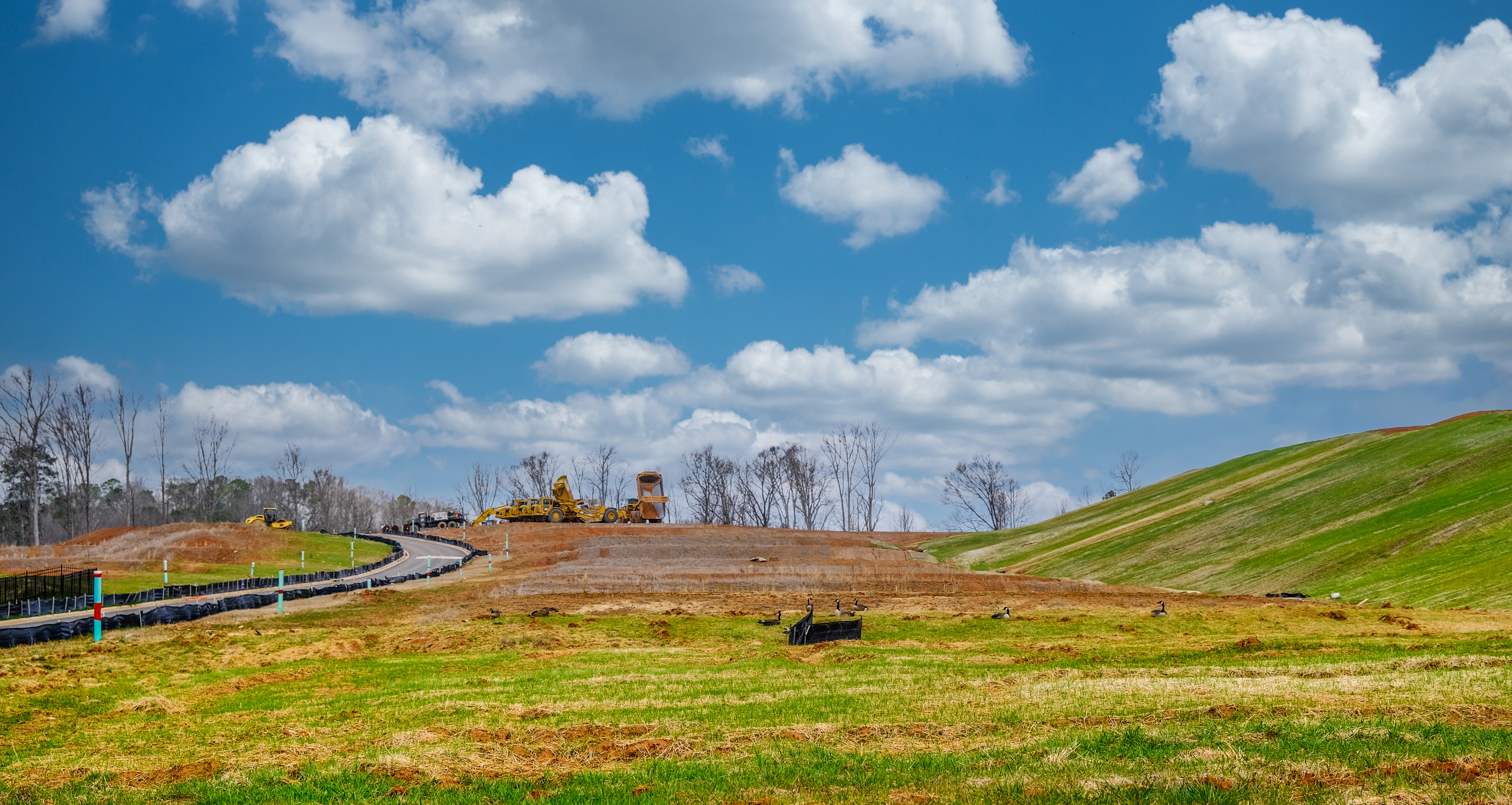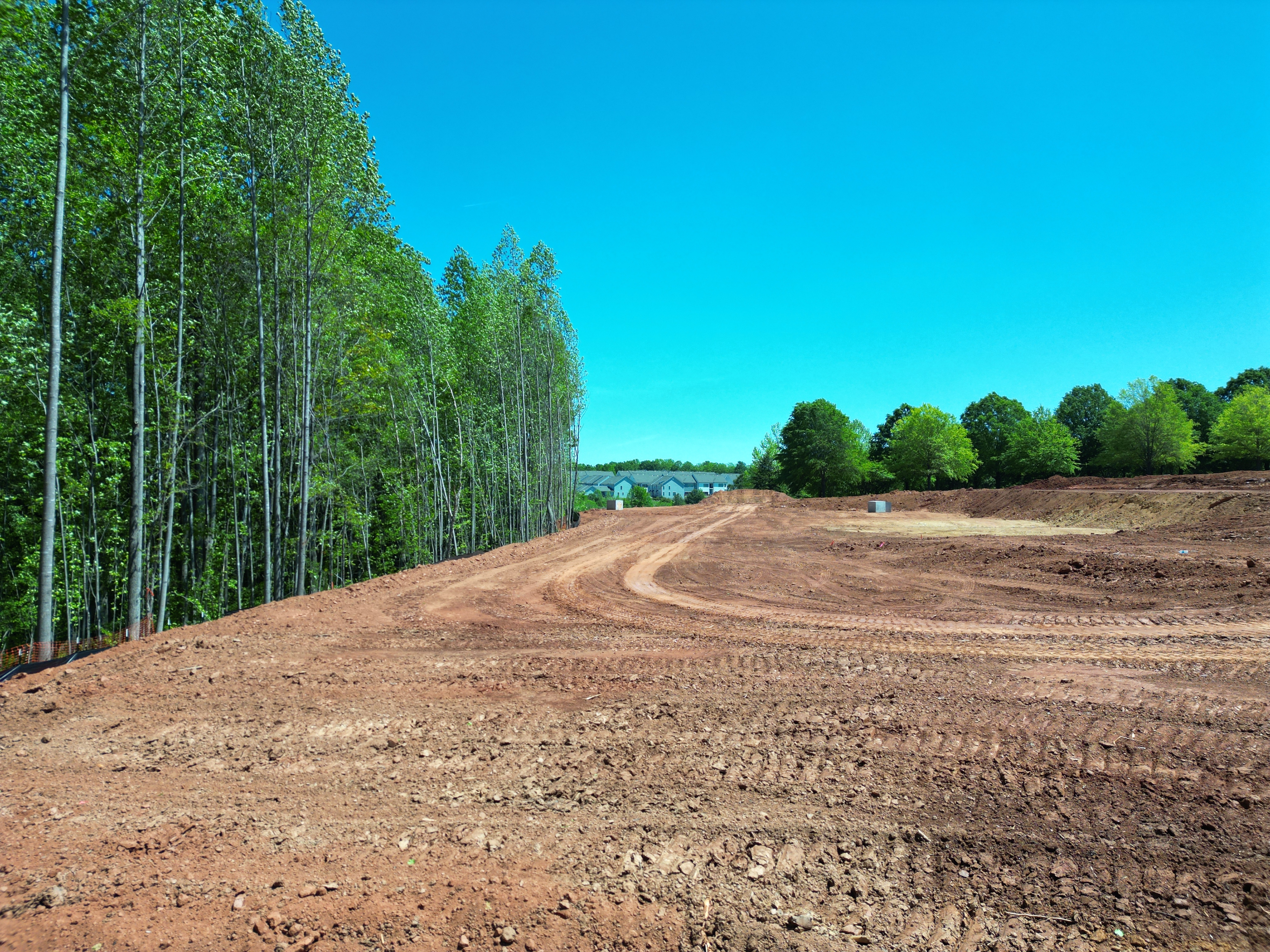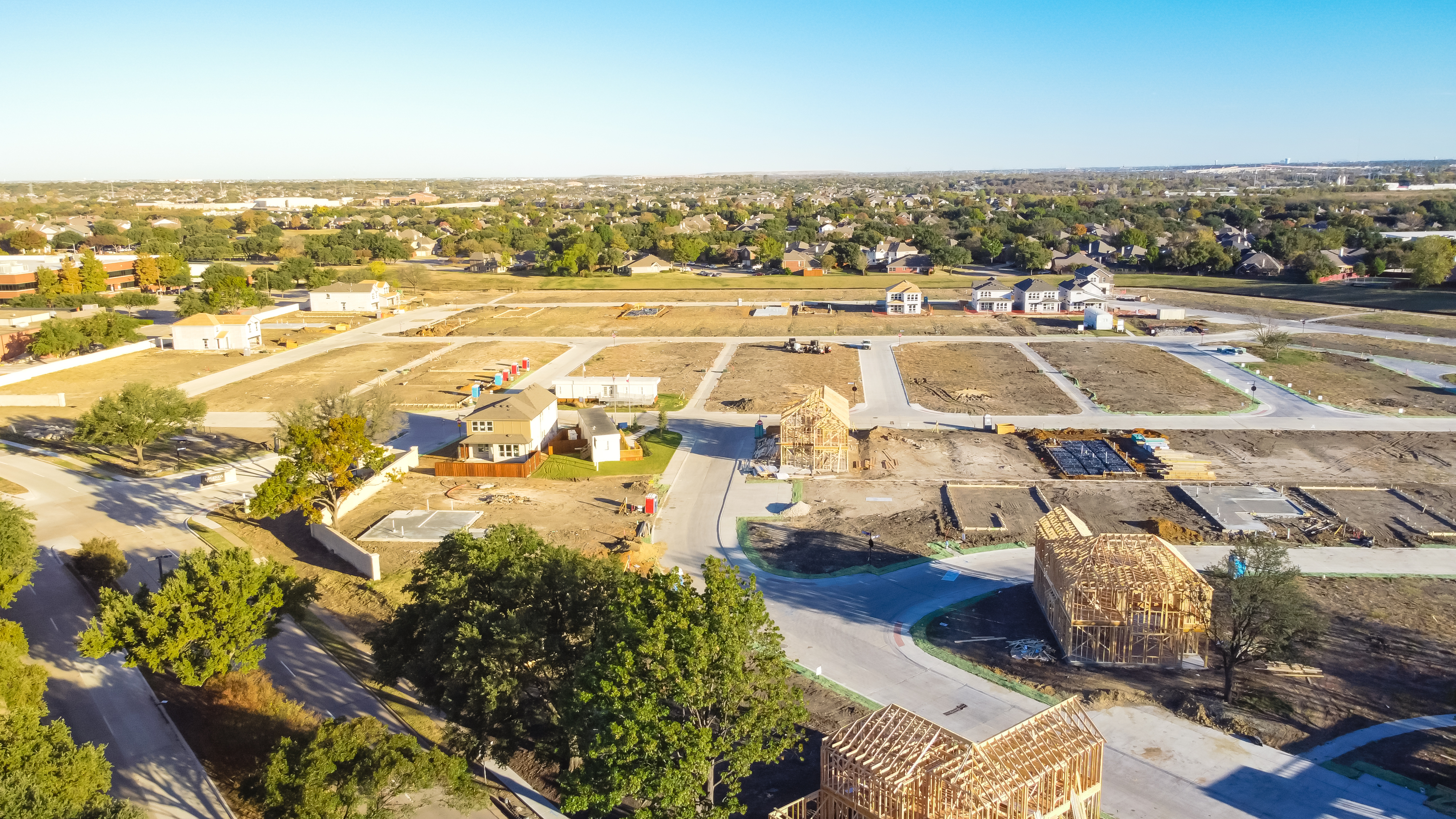
Stormwater runoff from construction activities can have a significant impact on water quality and increase the rates at which runoff leaves a project site. As stormwater flows over a construction site, it can pick up pollutants like sediment, debris, and chemicals and transport these to a nearby storm sewer system or directly to a river, lake, or coastal waterways. Polluted stormwater runoff can harm or kill fish and other wildlife. Suspended sediment in stormwater can destroy aquatic habitats and impact the local wildlife and industries that depend on them. High volumes of runoff can cause stream bank erosion and impact adjacent or downstream properties. Additionally, larger debris can clog waterways and potentially reach the ocean where it can impact marine habitats.
To limit adverse impacts of construction projects on South Carolina waterways, SCDES administers a permitting program designed to regulate construction activity in the state and require practices that keep pollutants out of the streams. The permitting program is mandated in the Clean Water Act and is part of the NPDES (National Pollutant Discharge Elimination System) program.
What activities must be permitted?

- Construction activities (clearing, grading, excavating, filling of low areas) which will result in one (1) acre or more of land disturbance.
- Construction activities (clearing, grading, excavating, filling of low areas) which will result in less than (1) acre of land disturbance but that are being conducted within a larger common plan of development or sale
- Construction activities occurring within ½ mile of a receiving water body in South Carolina’s Coastal Zone
How is Larger Common Plan (LCP) Generally Defined?

- A Larger Common Plan (LCP) is "broadly defined as any announcement or piece of documentation (including a sign, public notice or hearing, sales pitch, advertisement, drawing, permit application, zoning request, computer design, etc.) or physical demarcation (including boundary signs, lot stakes, surveyor markings, etc.) indicating construction activities may occur on a specific plot." (63 Federal Register No. 128, July 6, 1998, p. 36491)
Examples include:
- if master calculations have been prepared and/or submitted for an entire site, then all phases and parcels at that site would be considered part of an LCP.
- If the site is part of a subdivision, industrial park, commercial park, etc., then it is considered to be part of an LCP.
- You can contact SCDES Stormwater Permitting Program staff if you have questions.
Who must apply for a permit?
- Construction site operators must seek coverage under one of South Carolina’s two NPDES Construction General Permits. Operators can be land developers, home builders, utilities, individuals, state & local governments. The operator has sole responsibility for ensuring the appropriate contractors, engineers, and resources are available and utilized to implement best management practices to control stormwater runoff during construction.
If the owner/operator of the construction activities changes during construction, the new operator must obtain their own permit via a transfer of ownership form.
What are the steps in obtaining an NPDES stormwater permit?
Step 1
Determine if the project site is located in one of South Carolina’s Coastal Counties
If the project is located in one of these counties, a Coastal Zone Consistency (CZC) determination from SCDES's Bureau of Coastal Management (SCDES BCM) is required along with the submission to Coastal Stormwater Permitting. The CZC must be issued prior to the NPDES Stormwater Permit.
- Beaufort
- Berkeley
- Charleston
- Colleton
- Dorchester
- Georgetown
- Horry
- Jasper
Resources on submitting for the CZC are found on Bureau of Coastal Management’s website.
Step 2
Review the SCDES Construction General Permit to become familiar with the requirements for construction stormwater projects.
- NPDES General Permit for Stormwater Discharges from Construction Activities SCR100000
Step 3
Develop a Stormwater Pollution Prevention Plan (SWPPP) for the site, keeping any receiving water bodies and water quality in mind. You may use the Water Quality Tool as a resource for developing the SWPPP. In most cases, South Carolina regulations require that the SWPPP be prepared by a South Carolina Licensed Professional Engineer, Tier B Land Surveyor, or Landscape Architect. Please see the appropriate NPDES General Permit for guidance.
Step 4
Submit a Notice of Intent in ePermitting requesting coverage for your discharges under the general permit. If your construction site is located within an area where SCDES has delegated stormwater review authority to a local government or a local government is mandated under the NPDES Municipal Separate Storm System (MS4) program to implement a SWPPP review program, then your NOI will not be considered complete without their approval.
Information on where to submit plans, calculations, and initial application based the project’s location can be found on Where to Apply.
Step 5
Wait until you receive the SCDES NPDES permit letter before beginning any land disturbing activities. Notify SCDES regional stormwater staff a week prior to land disturbing activities and of when the pre-construction conference will be held.
Step 6
Ensure that contractors, subcontractors and staff understand their roles in carrying out the SWPPP.
Step 7
All sites must implement the SWPPP, including regular maintenance and inspection of sediment and erosion controls and stormwater management facilities. In addition, construction sites with 2 acres more of land disturbance require qualified personnel knowledgeable in the principles and practice of erosion and sediment controls, who possesses the skills to assess conditions at the construction site that could impact stormwater quality, capability to assess the effectiveness of any Best Management Practices used on a construction site are required weekly inspections of active construction projects. Qualified personnel can be:
- SWPPP Preparer or person with a registration equivalent to the registration of the preparer of the SWPPP who is
- An individual who is under the direct supervision of an individual who is qualified to prepare a SWPPP
- An individual who has been certified through a Construction Site Inspector Certification Course that has been approved by SCDES. At present Clemson University’s CEPSCI course meets this requirement.
Step 8
Once the project is complete, submit a Notice of Termination to close out the permit.
All requirements for permit coverage are based on the amount of disturbance and location. Please see the links below for further information.
What Forms Will be Required?
Stormwater Program Area | Stormwater Site Types | Associated ePermitting Forms |
Public Sector Construction Projects SCR10
(Construction Projects Within or Outside of an MS4 Area)
| Notice of Intent (NOI) for new construction projects which disturb greater than one acre | D - 2617 |
NOI for new construction projects which disturb less than one acre
| D - 0451 | |
NOI for new construction projects which disturb less than one acre
| D - 2628 | |
| Any stormwater construction project for which the permit ownership is changing to a new Permittee | D - 2617 & D - 0434 | |
| NOI coverage for individual lots within a residential subdivision which has already been permitted under one master plan | D - 0432 | |
| Major Modification of an existing permit for land disturbance (any acreage) | D - 2617 & D - 0435 | |
| Notification of final site stabilization and permit termination request | D - 2610 |


